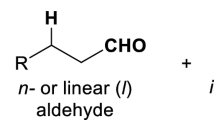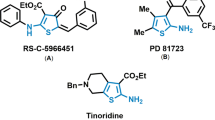Abstract
Alkaline hexacyanoferrate(III) oxidizes 2-methyl-3-pentanone and 2-methylcyclohexanone quite rapidly. Kinetic data show second-order kinetics with respect to hydroxide ion concentrations indicating the formation of hydrates by ketones in aqueous alkaline medium before their reaction with the oxidant. The rate follows direct proportionality with respect to the concentrations of hexacyanoferrate(III) and ketones. Externally added hexacyanoferrate(II) does not affect the reaction velocity indicating the reduction of oxidant takes place after the rate determining step. Orders with respect to various reactants were confirmed by various methods and the overall rate constant of the reaction was calculated by three different variations. Thermodynamic data suggest that 2-methyl-3-pentanone forms the activated complex more easily compared to 2-methylcyclohexanone.
Graphical abstract
Second-order in [OH−] in the oxidation of 2-methyl-3-pentanone and methyl cyclohexanone by alkaline hexacyanoferrate (III) indicates that oxidation proceeds through the formation of hydrates. Rate constant and thermodynamic parameters at five temperatures were calculated. Mono and dicarboxylic acids were confirmedto be the final oxidation products. Rate law given was—








Similar content being viewed by others
References
Jiang JQ, Lloyd B (2002) Water Res 36:1397
Sharma VK (2002) Adv Environ Res 6:143
Wilson IR (1966) Rev Pure Appl Chem 16:103
Singh VN, Gangwar MC, Saxena BBL, Singh MP (1960) Can J Chem 47:105
Singh VN, Singh MP, Saxena BBL (1970) Indian J Chem 8:529
Singh HS, Singh VP, Srivastava PN (1977) Indian J Chem 15A:111
Singh HS, Singh VP, Singh JM, Srivastava PN (1977) Indian Natl Sci Acad 43:24
Feigl F (1960) Spot tests in organic chemistry. Elsevier, New York, p 369
Mikes O (1966) Laboratory handbook of chromatographic methods, Chap. 2. D. Van Nostrand Co. Ltd., London (Eng. Ed.), p 96
Brown HC, Fletcher RS (1949) J Am Chem Soc 71:1845
Speakman PT, Waters WA (1955) J Chem Soc 40
Finar IL (1985) Organic chemistry, vol 1, VIth edn. ELBS, p 228
Bell (1973) The proton in chemistry, 2nd edn. Cornell University Press, Ithaca, NY, p 183
March J (2001) Advanced organic chemistry, 4th edn. John Wiley & Sons (Asia), p 276
Sykes P (1988) Mechanism in organic chemistry, 6th edn. Orient Longman, New Delhi, p 217
Singh MP, Singh DP, Singh AK, Kumar M (1977) Indian J Chem 15A:718
Neorgi P (1908) Z Inorg Chem 59:213
Barmashenko IB, Voronin MM (1963) Legka Prom Nauk Tekhn Zb, 16
Lukes RM (1964) Plating 51
Shanker U, Singh MP (1968) Indian J Chem 6:702
Tandon PK, Kumar S, Srivastava M, Khanam SZ, Singh SB (2007) J Mol Catal A, Chemical 261/2:282
Singh MP, Ghosh S (1955) Z Phys Chem 204:1; ibid. 207, 187 (1957)
Wiberg KB, Nigh WG (1964) J Am Chem Soc 86:3849
Kochi JK, Graybill BM, Kwiz M (1964) J Am Chem Soc 86:5257
Wiberg KB, Maltz M, Askaso M (1968) Inorg Chem 7:830
Acknowledgement
Authors are grateful to UGC, New Delhi (F. 32-240/2006 (SR)) for financial assistance.
Author information
Authors and Affiliations
Corresponding author
Rights and permissions
About this article
Cite this article
Tandon, P.K., Kumar, S., Srivastava, M. et al. Formation of hydrates from asymmetric and cyclic ketones in their oxidation by alkaline hexacyanoferrate(III). Transition Met Chem 33, 167–173 (2008). https://doi.org/10.1007/s11243-007-9027-x
Received:
Accepted:
Published:
Issue Date:
DOI: https://doi.org/10.1007/s11243-007-9027-x




